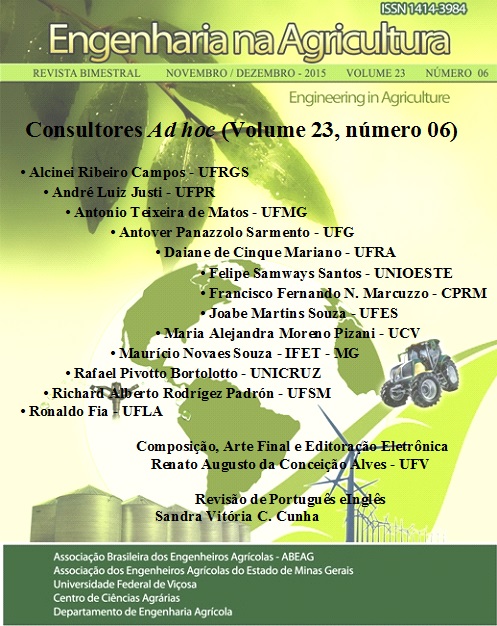PERFORMANCE OF VERTICAL FLOW CONSTRUCTED WETLANDS IN THE POST-TREATMENT OF WASTEWATER: POTENTIAL FOR AGRICULTURAL REUSE - DOI: 10.13083/1414-3984/reveng.v23n6p517-528
DOI:
https://doi.org/10.13083/reveng.v23i6.535Keywords:
controle de poluição, clarificação, nitrificação, reúso agrícolaAbstract
A system consisted of two parallel vertical flow constructed wetlands treating effluent of an activated sludge plant were studied in order to evaluate the potential for nitrification, removal of turbidity, and removal of total suspended solids. The prototype was installed in a location for large events. The two beds were vegetated with the macrophyte Typha sp. The beds dimensions were 2.50 m long, 1.10 m wide and 1.20 m height making up a surface area of 2.75m2. The filter medium was composed of the following layers: top – 0.07m of gravel, intermediate – 0.60m of medium sand, and bottom – 0.13m of gravel. The system effluent was also evaluated in order to verify its adequacy to use for agricultural irrigation. The following variables were quantified: COD, TSS, turbidity, ammonia-N, nitrate and pH. The system was evaluated over 160 days demonstrating a potential treatability and robust buffer capacity for high loads, especially for short events, around 2-3 continuous days, serving a population up to 3,000 people. The system accomplished 40% nitrification, despite the low pH range (6.25 to 3.69), producing an effluent with an average concentration of 29.5 mgL-1 N-NO3. Values obtained for TSS (93.85% efficiency, concentrations: 37.4 mg L-1 influent, and 2.3 mg L-1 effluent), Turbidity (97% efficiency, concentrations: 31.1 NTU influent, and 1.0 NTU effluent), COD (efficiency 74%, concentration: 114.7 mg L-1 influent and 29.9 mgL-1 effluent) characterized an excellent quality of the final effluent for reuse in agriculture.Downloads
Downloads
Published
How to Cite
Issue
Section
License
Authors who publish with this journal agree to the following terms:
The author(s) authorize(s) the publication of the text in the journal;
The author(s) ensure(s) that the contribution is original and unpublished and that it is not in the process of evaluation by another journal;
The journal is not responsible for the views, ideas and concepts presented in articles, and these are the sole responsibility of the author(s);
The publishers reserve the right to make textual adjustments and adapt texts to meet with publication standards.
From submission, the author is fully conceding the paper's patrimonial rights to the publication, but retaining the owner of its moral rights (authorship and paper's identification) according to Creative Commons Attribution-Noncommercial.








 Licensed by
Licensed by 